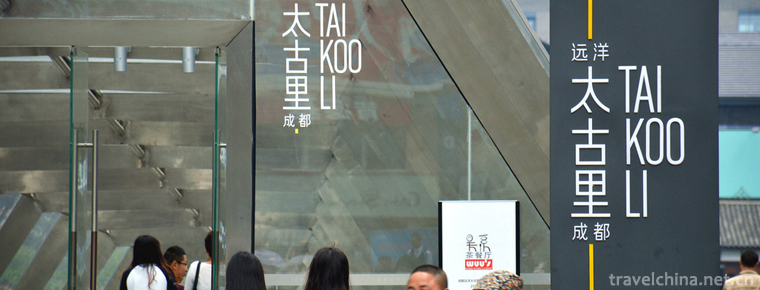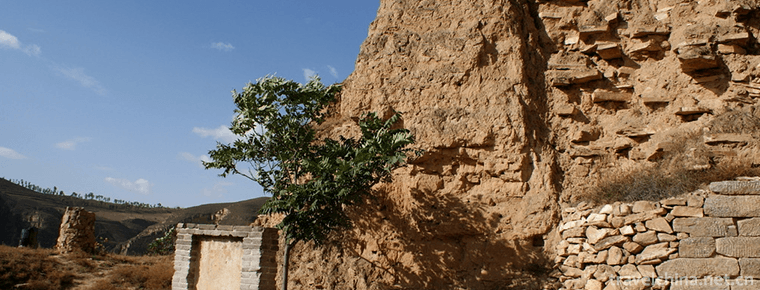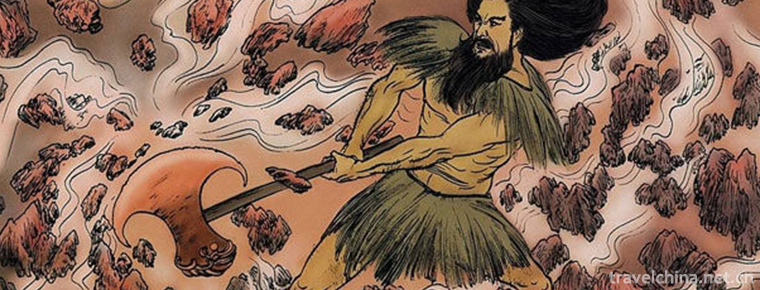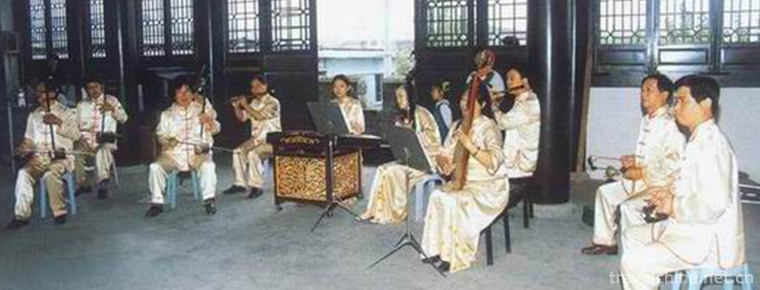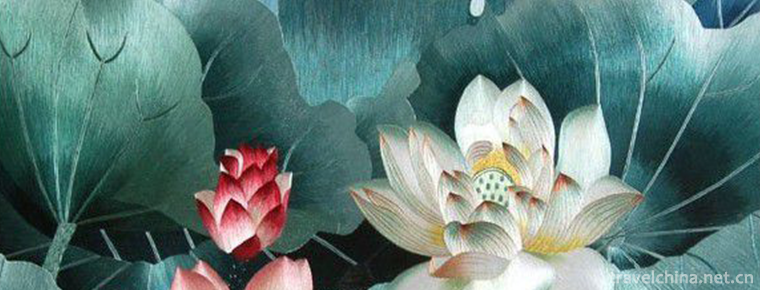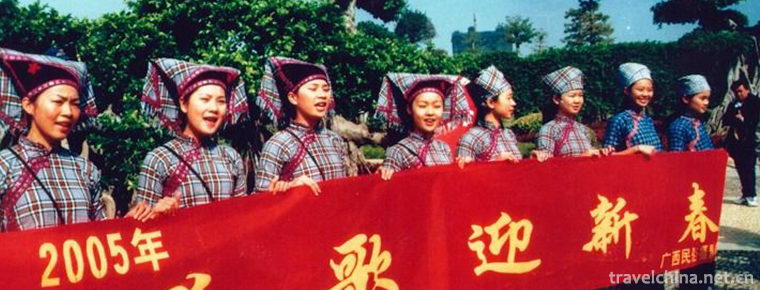Ah Shi Ma
Ah Shi Ma
Ashima, a traditional folk literature in Shilin Yi Autonomous County, Yunnan Province, is one of the national intangible cultural heritage.
Ashima uses oral poetry to tell or sing Ashima's story. The story of Ashima's relentless struggle against the powerful forces reveals that light will eventually replace darkness, goodness and beauty will eventually replace ugliness, freedom will eventually replace oppression and imprisonment of human ideals, reflecting the national character and spirit of the Suni people of the Yi nationality, who are "indestructible".
On May 20, 2006, Ashima was approved by the State Council of the People's Republic of China to be included in the first batch of national intangible cultural heritage catalogues, the heritage number: I - 28.
historical origin
Ashima's original form is created in Sani Yi language, which is the collective wisdom crystallization of Sani people after thousands of tempers, and has a broad mass character. It mainly spreads in the Yi Sani inhabited area of Shilin Yi Autonomous County, Yunnan Province, and is divided into two schools of great similarities and minor differences between the north and the south.
Ashima has a long history. There are different opinions on the origin time of Ashima. Some researchers believe that it sprouted in the primitive society of slash-and-burn cultivation, formed in the feudal society, and spanned the development process of human society. It has been created in Sani Yi language and passed down orally from generation to generation.
Because it has been spread in Sani language for thousands of years, it was not until modern times that Ashima was known to the outside world.
Cultural characteristics
primary coverage
Ashima used oral poetry to tell or sing Ashima's deeds: Once upon a time, in the place of Azadi, a poor Geluri-ming family had a beautiful girl. Her parents wanted her daughter to shine like gold, so they named her Ashima. Ashima is not only beautiful, but also good at singing and dancing. Many young men like her. She fell in love with Ah Hei, an orphan of green plum and bamboo horse, and vowed not to marry him. One year on the Torch Festival, she made an engagement with Ah Hei, a smart and brave man. The son of Rebubala, a wealthy man, also saw the beautiful Ashima, so he invited matchmakers to talk to him, but no matter how he threatened or lured, it was no use. The Rebubala family took advantage of Ah Hei's opportunity to herd sheep in the distance. They sent someone to rob Ashima and force her to marry Ah Zhi. Ashima refused to die and was whipped and put in a black prison. Ah Hei heard that he came to rescue Ashima day and night. He and Ah Zhi competed against each other in singing, cutting down trees, catching trees and sowing seeds, all of which won Ah Zhi. Enraged, Rebubala directed the family to release three tigers and rush to Ah Hei. Ah Hei shot the tigers to death and rescued Ashima. The ferocious Rebubala father and son refused to stop, colluded with the cliff god, took Ashima and Ahei across the river, and let the flood sweep Ashima away. Ying Shange girl of Twelve Cliffs rescued Ashima and turned her into a stone peak and an echo god. From then on, she will answer you as you call her. Her voice, her shadow will always remain in the world. The story of Ashima's relentless struggle against the powerful forces reveals that light will eventually replace darkness, goodness and beauty will eventually replace ugliness, freedom will eventually replace oppression and imprisonment of human ideals, reflecting the national character and spirit of the Suni people of the Yi nationality, who are "indestructible".
artistic characteristics
Subjective thinking
Ashima consists of thirteen chapters, each of which focuses on the characterization of Ashima. From Ashima's birth, growth, Rebubala's Tohai fever, matchmaking, relatives, to Ashima's imprisonment, arrow pulling, rescue, and echo, Ashima's "life and death" tragic fate is vividly and vividly described, vividly and touchingly. In Ashima's persistent struggle against the powerful forces, it reflects the national character and spirit of the Korean Sani people who are "indestructible". Ashima is widely sung among the people, and its artistic charm has lasted for a long time.
Although there are many versions of the legend of Ashima, no matter which version it is, it expresses the tortuous and moving love story between Ashima and Ahei, portrays the artistic image of the beautiful, kind, industrious and brave Sani girl Ashima, shows the strong will of the Yi people to pursue a happy life, and praises the hard-working wisdom of the Yi people and the struggle against evil forces. Spirit of contention.
- Singing features
Ashima sang in five-word sentences, which used foreshadowing, exaggeration, satire and other techniques such as harmony, thimble, linking, metaphor and so on. The content and form were perfectly unified. As a narrative poem, it can be narrated or sung. Its tunes include "happy tune", "old man tune", "sad tune", "crying tune" and "cursing tune". There are no fixed occasions for its sung. It can be sung and sung in various occasions, such as marriage, sacrifice, funeral ceremony, labor and life.
Ashima's singing space mainly includes private space and public space. Private space mainly refers to residence; public space includes square, mountain forest, road, around pond, public house and space for group gathering and sacrifice. But the experience of space does not simply exist in the space itself. These two kinds of space can be transformed. When a group of Sanis live in a certain place, their residence as private space becomes public space. When a Sani live in a village square or a mountain forest, the public space originally owned as a group also becomes a private space.
- Heritage schools
Ashima can be sung in various occasions, such as marriage, sacrifice, funeral rites, labor and life, and has formed two transmission systems, one is folk tune, the other is Bimo tune. Wang Yufang sings folk tunes, while Bi Huayu is proficient in Bimo tunes.
Bimo is a priest of the Yi nationality and a successor of the national culture. It has a special position in the Yi society. Bimo is usually handed down from generation to generation. In addition to sacrificing divination, Bimo also compiles historical and folk stories into ballads and sings them orally. Bi Huayu is a descendant of Bimo family. The Bimo tune of Ashima is sung by Bimo and is mostly used in ritual occasions such as sacrifice, marriage and funeral.
Unlike Bimo tune, folk tune is sung by the general public, mostly in the occasions of labor and life. Wang Yufang can sing a variety of versions and forms of Ashima: Ashima as a child, Ashima as a worker, Ashima as a weaver.
Inheritance mode
Training
Every year, the inheritors will participate in the teaching of the training course for the inheritors of national culture organized by the Shilin County People's Committee. They will inherit Ashima culture and teach the characters of the Shi nationality, Bimo culture and folk etiquette.
Family history
Wang Yufang's disciples are his daughter-in-law Jin Rongfang and granddaughter Pri.
Singing way
Ashima, a folk song of Sani, is mainly spread in the form of singing, with different melodies and different modes of singing. Sing in sad scenes with sad melodies; sing in festive scenes with happy melodies.
Wang Yufang's Ashima is mainly composed of traditional tunes, but its content is improvised. For example, when singing labor fragments, sometimes she would sing while knitting hemp rope, to the effect that it was good to knit hemp for the country. Minor tunes and tunes are repeated constantly, and lyrics are sometimes improvised. This is what Wang Yufang himself said, "Sing as you like, and sing as you like in your heart".
Inheritance and protection
Inheritance status
With the change of life style, education system and social space of minority language use, Ashima's inheritance is facing a crisis.
With the social progress and economic development, the life of the Yi Sani people has become more and more prosperous, while the inheritors are more and more worried that Ashima will be lost. "Because most of the people in the village go out to work, many children go to the city to study. Some children slowly can't speak their own national language, let alone rap and sing. There will be fewer and fewer singers. "Cultural inheritance needs an environment. We sang in labor in that era. Now I hope that more people will sing Ashima. If only a few people sing, without forming an atmosphere, it can not be guaranteed that it will be passed on forever.
Inheritance significance
Literary value
Ashima is a literary work with local and national characteristics, which grew up in Sani Yi area and deeply rooted in the folk. It has a great influence on the formation and development of Sani's narrative poems. Since the formation of Ashima, later generations have used its creative techniques to create such narrative poems as Running to a Sweet Place, Gushan Rainbow, Bamboo Leaf Evergreen and Shepherd Xiaohuang. The last four poems have obvious traces of imitating the former, which shows that Ashima has a far-reaching impact on the formation and development of Sani's narrative poems.
As an ancient literary work, "Ashima" uses narrative methods of narration, narration, interpolation, narration and repetition. Portrait description, language description, behavioral description and psychological description are used in descriptive techniques. The foreshadowing, tamping and irony are used in the conceptual techniques. In rhetoric art, homophonic, thimble, metaphor and so on are used. Among them, homophonic modification is unique to Sani people, and some homophonic modification methods are unique to Ashima. In the distant times, the ancestors of Sani were able to use a variety of artistic techniques to create ancient works, which is also rare in the world. "Ashima" is also accompanied by a variety of tunes, singing with a variety of musical instruments, giving more cultural connotations than the general narrative poems.
The perfect unity of the content and art of the oral narrative poem Ashima makes it reach a higher level. From the point of view of narrative poems, she can be regarded as a model and representative work of similar works. In recent years, when choosing one hundred classical works of our country, Ashima has undoubtedly been listed as one of the hundred excellent literary books of the 20th century.
The value of anthropology, ethnology and Folklore
Ashima is a prominent manifestation of the traditional culture of the Shani people of the Yi nationality. It contains the spirit, belief and value orientation of the Shani people. It involves all aspects of the Shani people's clothing, food, shelter and transportation. It has the special value of anthropology, ethnology and folklore research materials, and has attracted the attention of the academic circles at home and abroad.
Sociological values
Ashima is rooted in the cultural tradition or history of the Shani people of the Yi nationality in Shilin, and plays a role in confirming their cultural identity. It has become a representative "business card" of the Shani people and the Yi people. Ashima is also recognized as one of the beautiful symbolic female images of the Chinese nation. It plays an important and positive role in strengthening national unity and building a harmonious society.
Ashima is a lively traditional culture of the Yi people, and has become an "image ambassador" in inter-ethnic and international exchanges. One of the new "eighteen strange" ballads in Yunnan is "Ashima can say godbye". It can be seen that Ashima continues to inherit the fine tradition of hospitality and friendliness of the Yi Sani people in modern society.
Inheriting characters
Bi Huayu, male, Yi nationality, born in 1952 and died in March 2013, is a native of Shilin Yi Autonomous County, Yunnan Province. In June 2007, Bi Huayu was selected as the representative successor of the first batch of national intangible cultural heritage projects and declared in Shilin Yi Autonomous County, Yunnan Province.
Wang Yufang, female, Yi nationality, born in 1941, is a villager of Yizheng, Changhu Town, Shilin Yi Autonomous County, Yunnan Province. In June 2007, Wang Yufang was selected as the representative successor of the first batch of national intangible cultural heritage projects and declared in Shilin Yi Autonomous County, Yunnan Province. She can sing different versions and different forms of oral narrative poem Ashima in Sani language. Her lyrics and melodies are simple and touching, with strong local spirit. She is praised as "Ashima" living in the folk by the Sani people of Yi nationality.
protective measures
In 2008, "Ashima Cultural Heritage Museum" was opened in Nuohei Yi Cultural Reserve. Wang Yufang's village cultural station also set aside a room for her to use as a seminar for Ashima's singing.
In January 2012, Ashima's seminar began to teach in spare time. There were dozens of students, including pupils, young and middle-aged people, and even the elderly over 80 years old.
Cultural Studies
The Suni people of the Yi nationality are well-known for their hard work, strength and creativity. The people's governments and people of all nationalities in Shilin County attach great importance to their own culture. They regard their native culture as a treasure and are proud of their rich traditional culture. We have made great contributions to the protection, excavation, research and promotion of traditional culture. Now he has published dozens of books and movies related to Benshi culture.
In May 1953, the Yunnan People's Cultural and Cultural Corps went deep into Guishan District, Lunan County, where the Yi Sani people gathered for excavation, and collected 20 kinds of Heteroquial Legends of Ashima. Later, Gong Liu, Huang Tie, Liu Zhiyong and Liu Qi arranged and polished the variants, which were published in 1954. In 1959, on this basis, Li Guangtian processed and published the long poem Ashima.
social influence
international repercussions
Since the early 1950s, Ashima published the Chinese edition in the relevant publications, it has been translated into English, French, German, Spanish, Russian, Japanese, Korean and other languages. In Japan, it has also been adapted into radio drama, opera, children's drama and other art forms.
Domestic influence
In China, Ashima has been adapted into movies, Beijing Opera, Yunnan Opera, Opera, Dance Opera, Sani Opera and so on.
Ashima not only has a far-reaching impact on the folk literature of ethnic minorities in China, but also has a great impact on other arts. Some operas adapted Ashima into stage literary works and deduced it with its unique artistic charm. For example, the Yunnan Peking Opera Troupe, Yunnan Opera Troupe and Lantern Troupe adapted Ashima to Beijing Opera, Yunnan Opera and Lantern Opera; the Yunnan Song and Dance Troupe adapted Ashima to dance drama and symphony, in which the dance drama Ashima was rated as the 20th century Chinese classic dance; the Yi people adapted Ashima to Yi Opera, which was well received by Yi compatriots. The Liaoning Opera and Dance Theatre adapted Ashima into an opera.
Today's Sanis consider themselves "Ashima Nation", "Modern Ashima" and "Modern Ashima" respectively. Shilin Yi Autonomous County, the main inhabited area of Sani people, is also known as the "hometown of Ashima". Some art groups are directly called "Ashima Art Troupe".
Honorary commendation
In 1982, China's first color wide screen stereo music and dance film "Ashima" won the first International Music Best Dance Film Award in Santander, Spain.
Important activities
In 2004, on the occasion of the 50th anniversary of the publication of the Chinese translation of the narrator's poem Ashima and the 40th anniversary of the release of the film Ashima, the Shilin County People's Government, in cooperation with the Central University for Nationalities and other units, held the "Ashima International Academic Seminar".
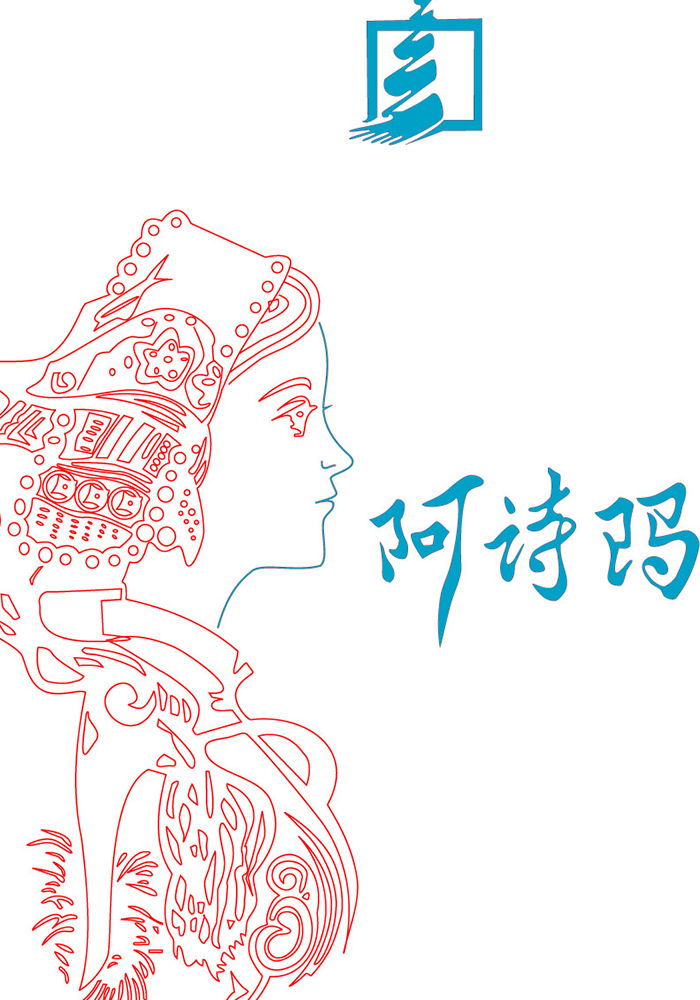

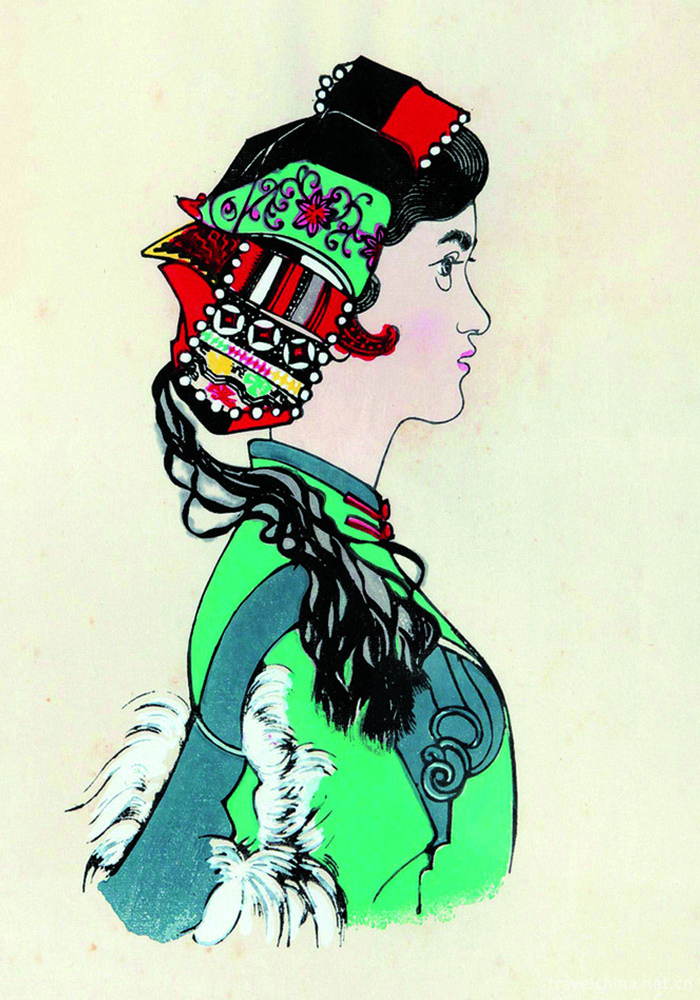
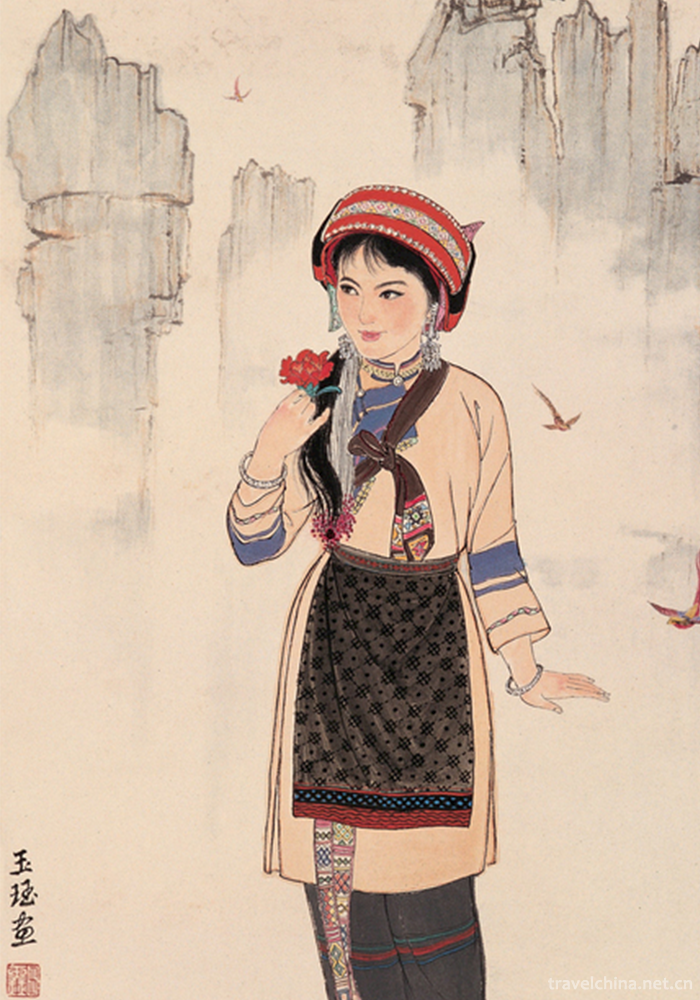

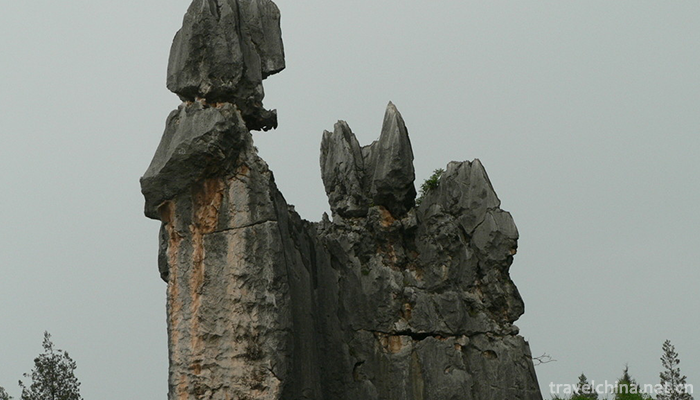

Ah Shi Ma
-
China Railway HighSpeedCRH
China Railway High-Speed (CRH) has two meanings: the technical standard of China High-Speed refers to the passenger dedicated line railway with 250 km/h
Views: 166 Time 2018-11-13 -
Hohhot Laoniuwan Tourist Area
Laoniu Bay is located at the entrance of Shanxi-Shaanxi Grand Canyon. This is the Great Wall, the only typical parallel section of the Yellow River. The widest part of the river is not more than 100 m
Views: 171 Time 2019-01-16 -
Jiaying Scenic Spot
Jiayingguan, commonly known as the Longwang Temple of the Yellow River, is located in Jiayingguan Township, Wuzhong County, Jiaozuo City, Henan Province, China
Views: 136 Time 2019-01-21 -
Lion Mountain Scenic Area
Lion Mountain Scenic Area is located in the east of Shaoshan Scenic Area, which is divided into Lion Mountain Scenic Area and Benbenling Scenic Area.
Views: 391 Time 2019-02-08 -
Ewenki costumes
The Ewenki people belong to the Tungusic race, and their clothing materials are mainly animal skins, as do the Tungusic people such as Manchuria and Xibo.
Views: 280 Time 2019-04-28 -
Pangu Myth
Pangu myth, the local traditional folk literature of Tongbai County and Biyang County in Henan Province, is one of the national intangible cultural heritage.
Views: 420 Time 2019-06-08 -
Making Techniques of Lianshi Paper in Lead Mountain
Lead Mountain Lianshi Paper Making Skills, local traditional handicraft in Jiangxi Province, one of the national intangible cultural heritage.
Views: 196 Time 2019-06-10 -
Shaoxing Ci Tone
Shaoxing Ci Diao, also known as Flower Diao, is commonly known as vernacular. It is a traditional folk song sung by blind artists (most of whom are women), and a story sung by three to nine people in
Views: 156 Time 2019-06-14 -
Shu embroidery
Shu embroidery, also known as Sichuan embroidery, is as famous as Su embroidery, Hunan embroidery and Guangdong embroidery. It is one of the four famous embroidery in China. It is a traditional Chines
Views: 416 Time 2019-06-15 -
Liao Song of the Zhuang Nationality
Liao Ge of Zhuang Nationality, folk literature of Pingguo County, Guangxi Zhuang Autonomous Region, is one of the national intangible cultural heritage.
Views: 155 Time 2019-08-16 -
Beijing Language and Culture University
Beijing Language and Culture University, established in 1962 under the personal care of Premier Zhou Enlai, is a university directly under the Ministry of Education of China. In June 1964, it was name
Views: 229 Time 2019-09-22
